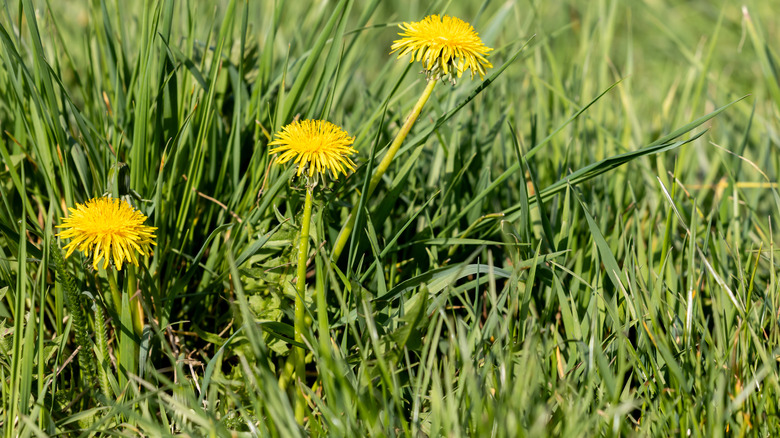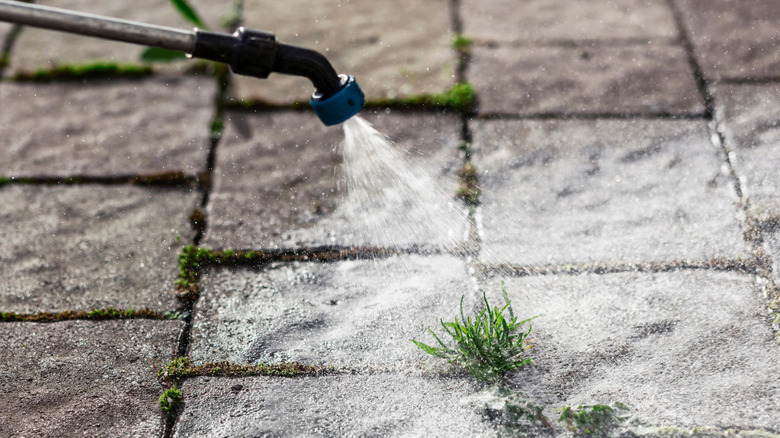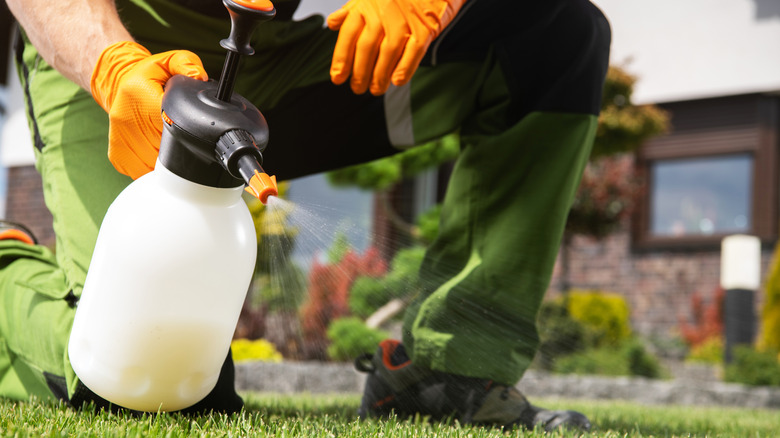What You Should Know Before Applying Gordon's Trimec Lawn Weed Killer
Summertime is notorious for cookouts, swimming, and playing in the grass. Having a nice, lush yard is every homeowner's dream, but pesky weeds can quickly turn that dream into a frustrating battle. While there is a right way to mow if you don't want weeds to take over, there are many different weed killers available to help with the job. Gordon's Trimec Lawn Weed Killer is highly rated due to its effectiveness and ability to control a broad spectrum of common broadleaf weeds. All weed killers have certain considerations to know before applying, and this one is no different. Before applying Gordon's Trimec Lawn Weed Killer, you must know what not to apply to: carpet grass, varieties of St. Augustine grass, or dichondra. Also, you should mow your lawn before applying, about one to three days before treatment.
When applying to your whole yard, you'll need to consider your grass type for an accurate mix rate. Cool-season grasses like Kentucky bluegrass and fine fescue should have a mixture of four fluid ounces of weed killer to one gallon of water for 1,000 square feet of lawn. Warm-season grasses, like Bermudagrass and Bahiagrass only require two fluid ounces mixed with one gallon of water to cover the same amount of space.
The biggest downsides of this product
There are many different types of weeds that grow on a lawn, so using this weed killer early in the season can prevent them from establishing a strong foothold and becoming more challenging to kill later. While there are certainly many advantages to using Gordon's Trimec Lawn Weed Killer, there are also some disadvantages. First, you'll want your lawn not to be dry before applying, so watering your lawn a day or two beforehand is key for proper application. However, you must also ensure there is no rain in the weather forecast for at least 24 hours after application, since the rain can wash away the product before it has a chance to be absorbed by the weeds.
In addition to being rather sensitive to water, Trimac is also sensitive to temperature. It's ideal to apply Gordon's Trimec Lawn Weed Killer on a sunny and warm day — aim for a temperature between 65 and 85 degrees Fahrenheit. Anything hotter than this could cause damage to your lawn, and anything colder than this could slow down the dry time and overall effectiveness.
One final downside to this product is its overall selectivity. It's not recommended for all grass types — as we mentioned earlier, this product should not be used on carpet grass, St. Augustine grass, or dichondra due to potential significant lawn damage. In the same sense, this product does not kill all types of weeds. While the Gordon's website mentions that this product can kill over 230 different broadleaf weeds, it might not be effective for all weeds, like crabgrass.
How to use this product safely
Every homeowner should be aware of the crucial weed killer tips to know before they spray. Always wear appropriate clothing and protective gear when applying weed killer, like long sleeves and eye protection. When using this product, you'll want to wait at least a month (or 30 days) between applications, with no more than two full-yard applications per year to avoid damaging your lawn or building up excessive herbicide in the soil.
You'll also need to keep people and pets off any spots that you've applied this weed killer to until it's dry, which ultimately depends on the weather. A good rule of thumb is to allow at least 24 to 48 hours for the product to fully dry and absorb, but be sure to refer back to the label on the back of the bottle for any special instructions. When applying, make sure to apply evenly over your lawn or section that you are treating, and avoid excessive overlap to prevent over-application.
When you are done applying this weed killer to your lawn, thoroughly clean the sprayer and any other equipment after use, including any measurement tools used to properly mix the treatment. Store any remaining product in the original container in a cool, dry, well-ventilated area. Keep children and pets out of reach and keep the bottle away from food or feed to avoid accidental contamination. If you did not use all of the solution but want to discard it, do not pour it into a drain or storm sewer. Instead, contact your local waste management company for proper guidance on how to dispose of it properly.


